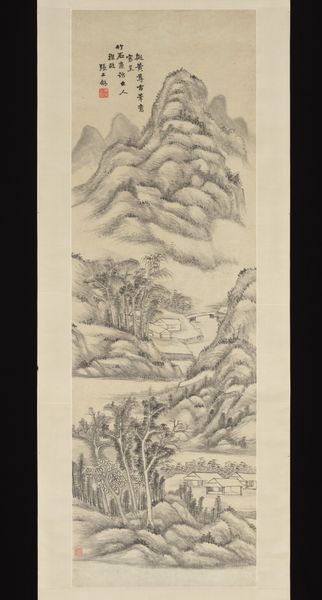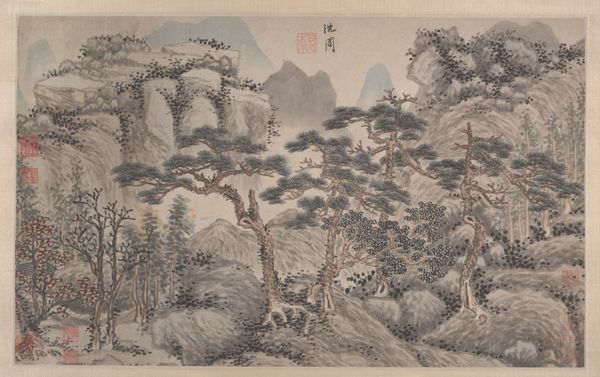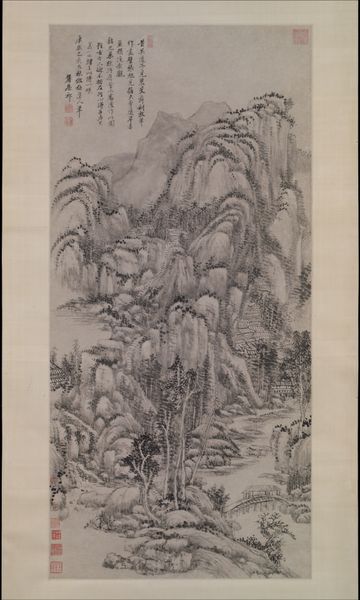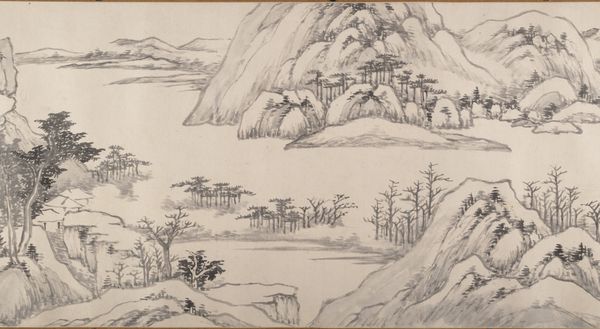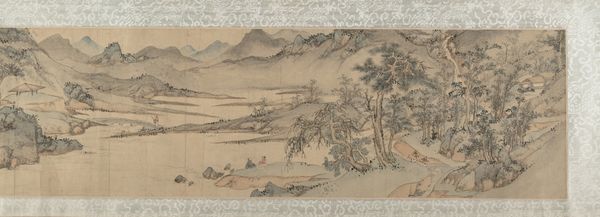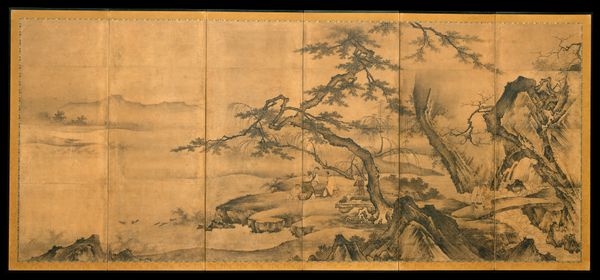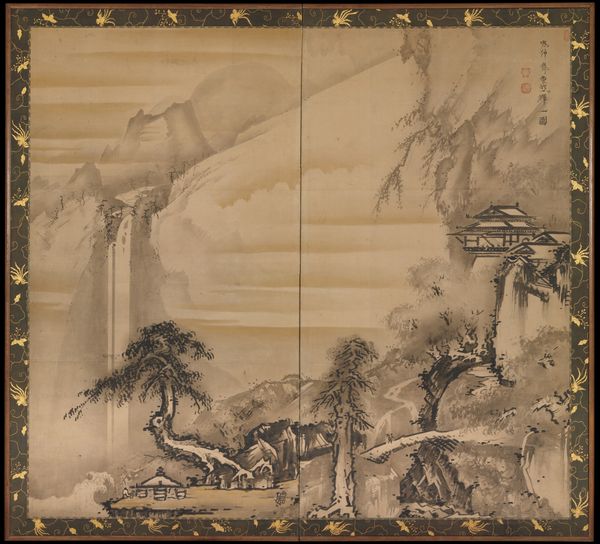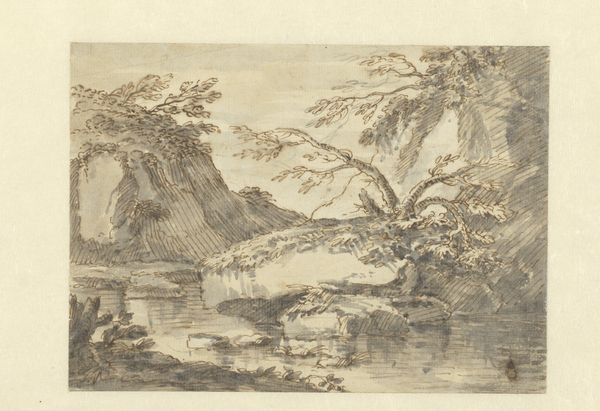
drawing, paper, hanging-scroll, ink
#
drawing
#
ink drawing
#
ink painting
#
asian-art
#
landscape
#
paper
#
hanging-scroll
#
ink
#
orientalism
#
calligraphy
Dimensions: 51 1/8 × 70 1/2 in. (129.86 × 179.07 cm) (image)80 1/4 × 72 in. (203.84 × 182.88 cm) (mount)
Copyright: Public Domain
Curator: Standing before us is Okada Hankô’s "Landscape after the Four Wangs," likely created around 1840. It's a hanging scroll, meticulously rendered in ink on paper, currently residing here at the Minneapolis Institute of Art. Editor: It's striking how much depth is created with a single color. There’s a certain peacefulness, almost melancholy, to the muted tones and soft, blurry style. It invites quiet contemplation. Curator: Exactly! Hankô directly references the "Four Wangs," prominent figures of early Qing Dynasty landscape painting. This was a specific artistic lineage known for its adherence to earlier masters and the revival of literati traditions. How does appropriating the techniques of past generations reinforce existing power structures? And how does it challenge them? Editor: Well, landscape painting like this was definitely bound up in expressing social status. By emulating these masters, Hankô stakes a claim, but it can be a very radical stance. Consider that control over access to the specialized materials and sophisticated production processes such as applying just the right ink wash requires a form of specialized skill that is only accessible to elites. Curator: Absolutely, the choice of a hanging scroll speaks to specific display and consumption practices. Where would it hang, and who was meant to view it? It is ink on paper so it could easily be rolled up when needed, which made it possible to store it or carry it easily from place to place. This also means the materiality allows mobility which can offer some fluidity and dynamism of status to a broader audience. Editor: The "after" in the title becomes so significant then. The Four Wangs solidified specific approaches to landscape which allowed the form to be available as a standardized tool of expression to others. We see through materiality how Hankô engages and responds, creating a conversation across generations and social structures. It’s as if they're participating in a secret visual language known to a select few. Curator: Thinking about the labor involved is so crucial too, from the careful grinding of the inkstone to the control needed for each brushstroke. It’s physical work but demonstrates intellect. There's incredible artistry here. Editor: A quiet conversation in ink and paper. These artworks demand that we consider how art operates within cultural and economic ecosystems. They ask, Who has a voice, and whose stories get told? Curator: A visual manifestation of historical dialogue, and one we get to overhear, here, today. Editor: Absolutely, offering new insight with each viewing.
Comments
minneapolisinstituteofart almost 2 years ago
⋮
Okada Hankō’s monumental work is a tour de force in the spirit of the Four Wangs, a circle of conservative Chinese painters who created stylized interpretations of classic works. This painting follows orthodox principles of composition—the foreground, middle-ground, and background are distinct yet well-integrated—maintaining order in this otherwise fantastical, complex setting. The inscription reads:The water is gone from the stony river that has a disorderly look.The leaves are gone from the mountain that has a wonderful scene.The thoroughly wet old man on the bridge, where will he go'There is a western village where an unsettled game of Go is waiting for him.Tenth month, 1840(translated by Masato Nishimura)
Join the conversation
Join millions of artists and users on Artera today and experience the ultimate creative platform.

